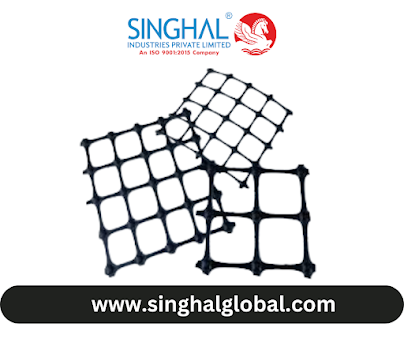Understanding HDPE Root Barriers: Essential Solutions for Landscape Management
High-Density Polyethylene (HDPE) root barriers have become an essential tool in landscape and urban planning, providing effective solutions for controlling root growth and protecting infrastructure. As urban environments continue to expand, the need for effective root management becomes critical to maintaining the integrity of roads, sidewalks, and other structures. This article explores the features, benefits, applications, and market dynamics of HDPE root barriers.
What is an HDPE Root Barrier?
An HDPE root barrier is a protective sheet or system made from high-density polyethylene designed to prevent tree and plant roots from encroaching into unwanted areas. These barriers are typically installed underground and act as a physical barrier, directing roots to grow downward rather than spreading horizontally, which can damage infrastructure.
Key Features of HDPE Root Barriers
Durability: HDPE root barriers are made from a robust material that resists tearing and degradation from soil, moisture, and chemicals. This durability ensures a long lifespan, making them a cost-effective solution for root management.
Flexibility: Root barrier sheets are flexible, allowing for easy installation in various shapes and sizes to accommodate different planting configurations and landscapes.
Chemical Resistance: HDPE is resistant to a wide range of chemicals, making it suitable for use in environments where fertilizers or other chemical treatments are applied.
Water Permeability: While root barriers prevent root encroachment, they are designed to allow for proper drainage and water infiltration, ensuring that plants receive adequate moisture without compromising structural integrity.
Applications of HDPE Root Barriers
1. Urban Landscaping
In urban settings, where trees and plants are planted near sidewalks, roads, and buildings, HDPE root barriers are essential for preventing roots from damaging pavements and foundations. By directing roots downward, these barriers protect infrastructure while allowing trees to grow healthily.
2. Parks and Recreation Areas
In parks, HDPE root barriers are used to manage tree growth and prevent damage to walking paths, recreational areas, and other amenities. This application helps maintain the aesthetic appeal of parks while ensuring safety for visitors.
3. Commercial Developments
Commercial properties often utilize root barriers to protect landscaping investments and prevent costly damage to parking lots and building foundations. Properly installed root barriers can save property owners significant repair costs in the long run.
4. Agriculture and Nurseries
In agricultural settings, root barriers can be used to manage root growth in nurseries, allowing for better spacing and healthier plant development. They help ensure that roots do not interfere with neighboring plants, leading to more efficient cultivation.
Benefits of Using HDPE Root Barriers
1. Structural Protection
One of the primary benefits of using HDPE root barriers is the protection they provide to buildings, sidewalks, and other structures. By controlling root growth, property owners can avoid expensive repairs and maintain the integrity of their infrastructure.
2. Improved Plant Health
By directing roots downward, HDPE root barriers promote healthier root systems. This allows trees and plants to access nutrients and moisture more efficiently, contributing to their overall growth and stability.
3. Cost-Effectiveness
Investing in Root barriers HDPE can lead to significant savings over time. The cost of installing HDPE root barriers is often much lower than the expenses incurred from repairing damaged infrastructure caused by invasive roots.
4. Eco-Friendly Solution
HDPE is a recyclable material, and root barriers made from this substance offer an environmentally friendly option for managing root growth. Additionally, by maintaining healthy plants and trees, root barriers contribute to urban greening efforts.
The Role of HDPE Root Barrier Manufacturers
The market for HDPE root barriers is supported by various manufacturers specializing in producing high-quality root barrier sheets. These manufacturers play a crucial role in ensuring that products meet industry standards and customer needs.
Choosing the Right Manufacturer
When selecting an HDPE root barrier manufacturer, consider the following factors:
Quality Assurance: Look for manufacturers with a strong reputation for quality. Their products should meet industry standards and undergo rigorous testing for durability and performance.
Product Variety: Choose manufacturers that offer a range of HDPE root barrier products, including different thicknesses and sizes, to accommodate various landscaping needs.
Sustainability Practices: Opt for manufacturers that prioritize eco-friendly production methods and materials. This aligns with growing consumer preferences for sustainable products.
Customer Support: Reliable customer service is essential. Look for manufacturers that provide comprehensive support, including guidance on installation and product usage.
FAQs
1. How deep should an HDPE root barrier be installed?
The depth of installation can vary based on the specific plant species and local soil conditions, but a general guideline is to install the barrier at least 24 inches deep to effectively redirect roots.
2. Can HDPE root barriers be used in all soil types?
Yes, HDPE root barriers can be used in various soil types. However, it’s essential to assess soil drainage and moisture levels to ensure optimal performance. Proper installation is crucial for effectiveness.
3. How long do HDPE root barriers last?
HDPE root barriers are designed to last for many years, often exceeding 30 years, depending on environmental conditions and installation quality. Their durability ensures long-term protection for plants and infrastructure.
Summary
HDPE root barriers are essential tools for managing root growth in urban landscapes, parks, agricultural settings, and commercial properties. Their durability, flexibility, and chemical resistance make them effective solutions for protecting infrastructure while promoting healthy plant growth. As the demand for effective landscaping solutions increases, the role of HDPE root barrier manufacturers becomes increasingly important in providing high-quality products that meet diverse market needs. By understanding the benefits and applications of root barrier HDPE, stakeholders can make informed decisions that enhance landscape management and infrastructure protection.
.png)

.png)
Comments
Post a Comment